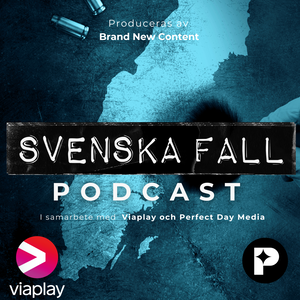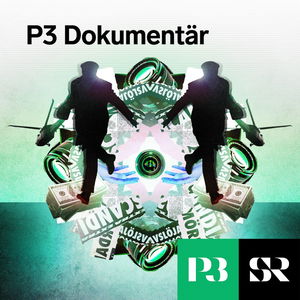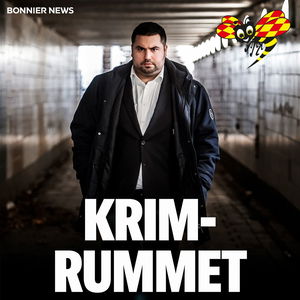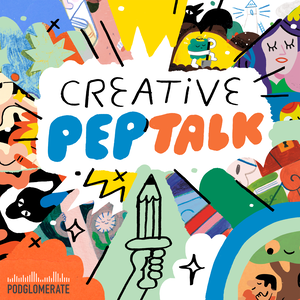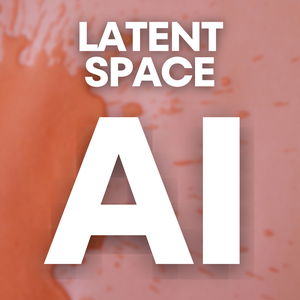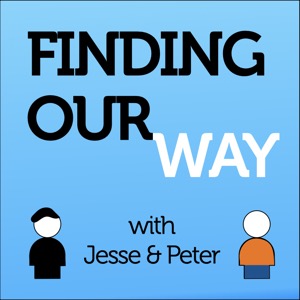

Transcript
Jesse: I’m Jesse James Garrett,
Peter: and I’m Peter Merholz.
Jesse: And we’re finding our way,
Peter: Navigating the opportunities
Jesse: and challenges
Peter: of design and design leadership,
Jesse: Welcome to the next phase. Joining us today to talk about what’s next for design is veteran Silicon Valley design and product strategy consultant Audrey Crane, who will share her perspective on the changing mandates for design among her clients, the power that consultants wield that in house teams don’t, and why sometimes the most effective design leaders are those who talk the least about design.
Peter: So Audrey, excited to have you here to work through some of the topics that Jesse and I have been discussing for a few episodes now, on kind of where things are going, for design, design leadership.
But before we dive into that, I think it would be helpful for our podcast audience who might not have met you, read you, heard of you, how do you introduce yourself? What do you do? How should people think of you out there in the world?
Audrey: Yeah. Well, so Audrey Crane, I’m a, partner at DesignMap. So we’re a consultancy. Do I say we’re a design consultancy? I don’t know. I think that’s one of the things we’re going to be talking. Let’s say product strategy, with some design support, company. So we’re San Francisco based. We’ve been around for 18 years, and we do a lot of B2B, B2B2C, like, complex product strategy. But I’ve been around for a long time. I was working at Netscape in the mid-90’s. So I consider myself, I flatter myself, a graybeard of Silicon Valley.
Peter: Does that mean you’ve been doing this work for almost 30 years? Um,
Audrey: That can’t be right. But I was super lucky to be, you know, at Netscape with Marty Cagan. With, I worked for, for Marty. I worked for Hugh Dubberley. I was in the room when Marc Andreessen first started talking about the famous “good product manager, bad product manager” stuff. So it was the olden times, but those people are, in a lot of ways, I think more relevant.
And I was super lucky to get to do that.
Like most theater majors, you know, just like somehow landing in the middle of Silicon Valley during the dot com boom of the late nineties.
Jesse: Your company, is called DesignMap, but you hesitate to call your work design. And obviously there’s, there’s something going on in that. And I’m curious about just your own relationship to design yourself as a creative professional.
Audrey: I did study theater in college and I studied math as well. I studied a form of mathematics that’s like very theoretical. And so growing up, I think a lot of kids still are like, they’re good at math or they’re good at English. They’re good at one or the other.
But theater in particular, as a creative outlet is really, really bounded, right? You have like the script and what you say and what other people say. And then on the other hand, the kind of math that I was doing, which was really like, by my senior year of college, we’re just writing proofs. Like there’s no numbers left anymore. And there’s actually a lot of intuition and creativity that goes into that.
‘Cause like of all the things that we know to be true about whatever kind of math we’re doing, like, what’s the next thing that’s going to get me to where I want to go. Even to the point where I mean, this is like the nerdiest thing I could possibly say, but like reading proofs that gave me goosebumps because they were just like so elegant, you know, and, and so smartly put together.
And so when I graduated from college and I was like broke and happened to be able to, have done some tech work because my dad was an engineer, way in the olden days, I landed at Netscape. Solely because Hugh Dubberly saw my resume and was like, math and theater, like, that’s super weird. I got to meet this person.
And then I got to work for him. And through him, I found that this design thing, which for me, at least is like a perfect match of empathy and creativity, but also like problem solving within boundaries towards a particular goal. And so it, matched my brain pretty well, that for me is like the creativity of constraints is really, really fun. And design is a place where I think still, like, a lot of people don’t know that it exists, that you, don’t have to be just like a highly creative, quote, unquote, right brain person or the other.
Jesse: What’s your relationship to design these days in your practice?
Audrey: I think that you can apply a design process or design thinking, if you must, to pretty much anything. So a lot of times now the design work that I’m doing is like, this client really needs this thing and understanding what the thing is that they really need like that by itself is like a listening and learning process.
Sort of like when somebody goes to the doctor and says, I need this medicine. There’s a lot of questions to understand, like, what’s really going on and is this medicine really going to help you? Or is it something else? That and figuring out, like, what do we do that might help solve that problem, and can we do it within this timeframe and this budget, is actually like a pretty fun, creative process for me. It maybe sounds horrible and dry, but I really love it. And if we can’t help them, figuring out who can help them, and brokering that introduction.
But at the end of the day, it’s still a problem. And I want to understand the problem and think through lots of different ways to solve it and figure out a path there. So that’s not to say that I don’t work on projects specifically. And sometimes I do, and that’s really fun. But a lot of times it’s more at that kind of second order, third order of design, if you like, from the, product.
Now, is that strategy? I don’t know. Yeah.
Peter: Well, and, reflecting on something you said at the outset, where you weren’t sure what to call DesignMap, which has the word design in its name, but you’re like, are we a design consultancy anymore? Which, you know, Jesse and I started Adaptive Path in 2001, and we called ourselves a user experience agency, and we didn’t use the word design in how we defined our work for years, because of associations with that word that we didn’t feel were appropriate for us.
So let’s, get to that, you know, your company is called DesignMap, but you’re not sure if you’re a design consultancy. What’s up with that?
Audrey: OK. We are a design consultancy. So I say that a little bit tongue in cheek, but if we think about what the market wants, does the market want design? You know, I’m not sure that if, I just approached somebody and I said, Hey, we offer design services, that anybody in the market at the moment is going to be like, “Oh, great, I need design services. That’s what I need. I need design services.” Right?
They might need help with stakeholder alignment. They might need help kind of articulating a vision. They might need help solving you know, a problem where the usage of a product has plateaued and they need it to improve. All of these are things that can be solved with design.
But I posted about this recently, and I think that what I’m seeing is that people are using the word design less, and it’s not just quote unquote, “speaking the language of the business,” which I think we’ve been talking about as a design profession for a while now, right?
It’s not just being articulate in you know, whatever, TAM, what’s the total addressable market, but actually just only using those words and design just happens to be the tool that we’re using to solve whatever problem or opportunity we’re talking about.
Peter: When you mentioned people are not using the word design anymore, who people are not using the word design anymore? Is it that prospective clients aren’t using the word design anymore? Is it the designers are wary of that word?
Audrey: Who’s the they? Yeah. I mean, I think famously Katrina Alcorn, like, really put her finger on it when she left IBM and said whatever my next job is, is going to have the word product in the title. I remember a part of what she said was, I feel like I’m doing so much of what is maybe traditionally considered product anyway, like I might as well take the title and have a bit more control and it’s almost like the word product is hard and the word design is soft, somehow.
So I think that was kind of the first famous moment. But then I have a lot of, friends who are VPs of design and at DesignMap, we have a voice of the customer program where we pay a recruiter to recruit VPs of design. And we sit and we talk with them for an hour. We do this as like a regular practice, like taking our vitamins, as they say, right?
And when I hear my friends talk about it, see decks from VPs of design, it’s so striking. And they don’t even point it out to me, but the word isn’t even there. Like, I, just saw a VP of design, it was her budget for next year and her proposed budget had foundations, and investing in foundational work, and acceleration and all these other things.
And I commented to her, you know, you’re a, she is a trained, like, dyed-in-the-wool career designer, like, and the word design doesn’t show up here. And she said, “Oh God, no, you know, absolutely not.” No, what this actually is, is it’s a design debt. What this thing over here is, is design systems and like heuristic review and improvements.
So she like almost code switched with me. But when I’m talking about investing money in my team and in external support, that’s not the word that I’m using. It’s super interesting. And there’s, something about all of these things, right? Like how many years have you heard designers complain that they are having to do product managers’ jobs?
Like not every designer and not every product manager, but I mean, I’m sure that I’ve heard designers talking about that for 15 years, right? And then, on top of that, this, not just being able to speak business-ese, but that’s all you’re speaking in, is really interesting to me.
Peter: So yesterday I was onsite at a company for their internal design celebration that very much used the word design. Public company, 84,000 employees, lot of hardware, manufacturing.
So when they talk design, they actually were talking a lot about industrial design. They had their Chief Product Officer show up at this event and talk about how he wants this business to be design-led.
And I’m saying this not to disagree. I’m saying this to suggest, I think, the conversation is really scattered and lumpy. And in some contexts, design has become a dirty word or it has become minimized to mean production. And so like the leader that you were talking about, right, if they want to talk about stuff that isn’t pumping out assets for engineers to code, they have to use new language to get at what we used to call design or, you know, user experience practices.
But then there’s still other companies that are celebrating the opportunity of design and want to be design-led and talk about Apple as a standard bearer. And I guess I’m trying to make sense of, this polyphony around the concept of design.
This company that is celebrating design, when this Chief Product Officer talks about design, he had a fairly, I would say, narrow view of what it is. And he talked a lot about the emotional connection and the emotional engagement that design drives.
So, while you’re talking about how design can be a tool to help I don’t know, roadmaps and all this kind of strategic thinking and all, this leader is still seeing design as how do we create something that people love, in this kind of visceral, emotional way that feels very product-y, feels very, you know, Apple…
Audrey: Like fonts and colors…
Peter: Yes. As opposed to, like, what you were talking about, which is design as a means to solve all kinds of problems.
Audrey: Articulate a strategic vision.
Peter: Well, yeah, the opportunity of design thinking was this recognition that design is a set of practices that can be applied to literally any problem.
Audrey: Yeah. Well, were you surprised that the design celebration happened, that it was so design forward that the product, head of product talked about it that way? . .
Peter: I was a little surprised. I mean, many companies still host internal design and user experience summits, right? And so, you know, I expect that community to come together. I was a little surprised that this Chief Product Officer took, I think, at least an hour out of their day to communicate to this group about the importance that he sees this group of people having for the future of the business and his commitment to it.
It was also interesting, you know, hearing how he talked about design in a way that was very, again, product-oriented and, frankly, kind of hardware oriented. Whereas this was a group of people who were mostly working on software. But what I reflected to the group when I spoke at this event, you know, listen to how your leadership is talking about design, right, and, what kind of purchase does that give you? How can you start with where they are in terms of that understanding of design and then, and then move them along?
So there’s an opportunity there.
Audrey: Yeah. It’s interesting that they use the phrase design-led and also seem to talk about it just in, like, the product emotional appeal way. It’s very interesting. I’m super interested in the overlap of the Venn diagram between like designers and product managers or designers and engineers, or just, you know, designers and the rest of the world.
And you know, there’s so much designers talking to designers about design. I wish we talked more outside of that. It’s interesting though. I, I’m friends with Marty Cagan and I was at his book launch a couple of months ago for his latest book.
And, I think like the shorthand of it is that I actually think it might only be designers that are not wanting to use the design word. Right? Because I can’t think of any product leaders who have done that, or even really that know what’s going on.
And so when I chatted with Marty, and then I was lucky enough to have drinks with Dan Olsen as well. He runs like a big product leadership get together at Intuit on the peninsula…. I can’t remember where, but there was like no awareness about the big design freak out at all.
And so I’m like, oh my gosh, like whole design teams are being let go, like amazing design leaders are looking for their next job for actually years. Like, designers are changing their titles from design leader to product leader. Like it’s a whole big thing. They weren’t aware of that. And I think that’s interesting, especially because those two folks, Dan and Marty, are like talking to everybody all the time. Right.
So that was interesting. And also one of the things that Marty said, you can see the video of this in the talk that he gave at his book launch ,was I was just chatting with a CEO and he said to me there’s 200 product managers in this organization, and if I let them go tomorrow, I’m not sure that anything would be any different. I can’t tell you what it would be.
And Marty was using that as like a, Hey, you guys, you got to pay attention and start doing great product management. To me, that sounds like what’s happened to some friends, frankly, where like the whole entire design team did get chopped off in places because, I don’t know, Elon Musk, like, I don’t know why there’s just this like, oh, we can let everybody go and we can still operate in the black, and so why not?
Two points, I guess, right? One is maybe, like, trying not to use the D-word is maybe something that’s only happening in the design community and that other people aren’t aware of that or concerned about it. But that also maybe this is impacting other roles that have, you know, arguably potentially similarly squishy impacts on outcomes for businesses. I’m sure a product manager wouldn’t like to hear me say that, but…
Well,
Jesse: it’s interesting to think about it from the product management point of view, because it’s true that if you look at the discourse, such as it is, on LinkedIn, if you look at what design leaders are talking about, they are constantly talking about improving the relationship with product and making the relationship with product successful.
If you look at what product leaders are talking about, they are almost never even referencing a relationship to design, never mind investing in strategies for improving that relationship. And so I find myself wondering about the cultures that both sides have now inherited, you know, in the 30 years since Netscape, that kind of bake in a bunch of assumptions and a bunch of expectations of the other side that are creating these blind spots because, yeah, seems impossible for all of this to be going down on the design side and the leadership in the product community, not even recognizing that it’s going on there.
Audrey: Having no idea.
Jesse: Yeah. So I wonder about, like, what’s it going to take to build some bridges between these communities so that we can at least have that sense of mutual visibility.
Audrey: Gosh, I mean, I think that’s an amazing question, Jesse. I, you know, I’m in the Leading Design Slack channel and I’m in the Mind the Product Slack channel, and Mind the Product has, like, product and design, like, within there and nobody ever posts there. And similarly, there’s a similar channel in Leading Design, nobody ever posts there.
And, you know, I mean, I think it’s great, Christian Crumlish wrote his book, Product Management for Designers. My book, Design for CEOs, is about, like, trying to talk to other people about the tangible value of design and just the basic language. I mean, hopefully neither of you have ever read that book, because it’s so 101-y, but what we were finding is that CEOs were asking us why wireframes didn’t have color in them, or saying, like, when are we going to get the design maps? Like, we just didn’t even have the most basic shared understanding of language and process.
But also, every time I go to a design conference, if there’s a non-designer speaking, like, that’s one of the most interesting talks, right? So, I don’t know why we don’t reach out more.
But also, just talking about like product managers and designers working together, like, I sort of looked for a while for like, here’s a framework that we can say, this is what we expect of product managers and this is what we expect of designers. Like surely there’s a framework, right? And so I reached out to, I don’t know, 40 designers and I said, tell me the best thing that you ever got from a product manager and why you liked it. And I’m a pattern finder. I love models and concept maps. It’s like totally my jam for making sense of the world.
And what came back was total chaos, just all over the place. Absolutely, I couldn’t find a pattern in it anywhere. And, I mean, the reflection that I had is that these are two individuals who have their own experience, their own, things they love, things they hate, strengths, weaknesses, training, expectations, and that kind of like three-in-a-box idea, or like dedicating teams that get to work together long term so that they can storm and norm is maybe the only way to do that because, there’s too many different things that need to be done at any moment in time, the product discovery and design and development release process and people are just too unique, and maybe we can’t do that.
But, I agree with you, it seems very odd to me that there’s not more conversation across disciplines and, business, strategy, product, and we’re so sophisticated, I think design, I mean, you guys are giving PhD level talks at conferences, like we’re, we, I feel like we’re pretty good at it, you know, but what we’re not good at is, like, working across teams. And I really don’t know how to make that work better.
Peter: I find myself wondering… The anthropologist comes out in me, and how much of this is cultural and, and the cultures of design and design practice and design as a function.
And I’m having trouble saying the culture of product management because I, think product management isn’t nearly as coherent a culture and a function as design, right? So many different paths into product management, so many different flavors of product management, depending on what kind of organization you’re in, right? To be a consumer product manager at a social media company is very different than to be a B2B product manager at an enterprise SaaS firm, or to be a product manager at a bank or whatever, like, I think there’s a less shared culture.
But there’s something in terms of where folks are coming from, and then when they’re brought together, no work is being done to bridge those gaps. It’s just like, you got to work together and please start producing value tomorrow.
Audrey: Right. And you got six weeks and then you’ll be on something else.
Peter: Right, And you mentioned storming and norming… There’s a whole category of assumptions I had…. So Jesse and I, you know, we worked at Adaptive Path. I left Adaptive Path at the end of 2011. And as I entered the world of in-house product building, this was the start of things like Spotify squad models and stuff that was written about in 2012, Amazon two-pizza teams was also at least kind of popularized in 2012.
And I was under the assumption that like, Oh, when you go in house, you get this stable team of folks who are working on a problem together for, weeks, if not months, on end.
And they’re no longer working on projects. That’s the bad old way. That’s an internal services model. They’re working on a program and a product, and they’re just always endeavoring to make it better. This is over 10 years ago. This was what I had been hearing as the prevailing model of…
Jesse: right,
Peter: balanced teams, empowered teams, agile teams. And then you go in house and you’re like, no one is operating anything nearly like that.
Audrey: I mean, a few companies, but yeah.
Peter: So few.
Audrey: Yeah. Right. You got six weeks to do this and then you’ll be in the next thing. And, oh, by the way, you have 20 percent of your time to do it. And for whatever it’s worth, I think the kind of… “strategic sacrifice” is a phrase I learned from one of these VPs of design, I’m like, I’m just going to call bullshit.
Like there’s no way that with 1/16th of their time, that this designer is doing anything except for going crazy and maybe getting complained about, right? So like, I’m just not going to resource it. And we all know that like an engineer or product manager or somebody somewhere was designing it anyway. But we’re pretending like this poor schlub is spending 1/16th of their time? Like, no.
And I, agree with you. I mean, I’ve been internal too, and with our clients as well, we ask them these questions, but it’s just like a resourcing shell game. I mean, I agree with you about the differences between the design and the product culture, but we’re kind of all doing the same thing, right? We’re, like, trying to help somebody somewhere do something with this company, product, or service.
And we’re telling and testing stories about how we’re going to do that. Our tool for storytelling is Figma, their tool for storytelling is Excel, but otherwise, you know, I just don’t think it’s that different.
A big question is like, how are people incented in the organization, right?
Jesse: Yeah. When Peter was talking about the cultural diffusion in product management, I think it largely has to do with the very diverse range of incentives that exist in product management, depending on the category, depending on the product space, depending on the problem space.
Whereas design seems to have some kind of sense of its own center in a way. It has a sense of purpose in the world beyond what somebody told us it was, you know?
Audrey: I mean, it would be super interesting to try to map out the product management culture. I think it’s, it’s easy to say from the outside, like, Oh, there’s no real culture. It’s very diverse.
Jesse: Yeah, of course.
Audrey: But when I hear you say, Jesse, like we have a center, I don’t know if this is what you’re thinking of, but certainly one that I could think folks might go to is like, we are the advocates for the user, right?
That’s our role. I’ve heard product managers say, I do not ever want to hear a designer say that ever again. We are all advocates for the user. Like I’m not anti-user. That’s what we’re all trying to do. You guys don’t own that.
Peter: But then I hear one of my client’s Chief Product Officer, where I was helping him hire a VP of Design, saw Design’s primary role as the voice of the customer within the product development process, right? And so that’s again, like. there’s, not an agreement or alignment more within product.
All designers see their responsibility as being a voice of the customer and a representative of the user in the process.
Within product. Some do, some don’t.
Audrey: It might be to meet a deadline.
Peter: Some think it’s a good thing to delegate it, right? Like it’s not like they don’t think the customer matters, but they’re like, well, the product person’s got so many things to deal with, thus, the designer is the one who’s best responsible for that right? I don’t think it’s out of neglect or disinterest. It’s, how do we get all these people to get things done without overwhelming them?
Audrey: Yeah. I think that that product manager was reacting to the idea that, like, there’s some high ground that the designer could stand on, or they had a veto because they were the advocate for the user versus the product. I think it’d be, like, super fun to have a conference where engineers and product managers and designers came and all the talks were my favorite, or my worst, experience with other disciplines. And that would be really interesting. And at least we’d be like, listening more, you know, outside of our little talking bubble.
Jesse: You know, in your client work, you have the opportunity to directly observe both design leaders and product leaders as they do what they do in organizations. And I wonder what you’ve seen has helped design leaders have that broader influence and drive that broader vision of what design has to offer. What’s helping design leaders be successful as cross-functional partners?
Audrey: I think a lot of “yes, and”-ing, Ooh, I, you know, kind of being opportunistic about ways that they can help. And I don’t want to say being nice to work with, but I honestly have, heard and seen designers say, I used to be an asshole, and now I just try to be nice to work with, that’s what I tried to do. And then if there’s an opportunity where I can help, then I do.
And one person in particular was talking about like, we used to just like really focus on the products and just like, we were just product design, but I started to see opportunities where people are having trouble making decisions or getting alignment or just making time for whatever. And so I started to offer to help. And this is a VP of design saying, like, can I facilitate a workshop for you? Like, I would be happy to help.
And these conversations, they were, I think, again, a bit opportunistic about, like, these like more senior strategic level conversations, only casting themselves in the role of facilitator, but being in the room, being perceived as helpful, perceived as being able to support progress.
And at the same time, like, that person sort of grew that into almost like a practice inside of their organization, where folks would come to him and say, Hey, we’re having trouble with this, can you, like, lend me somebody to help with this conversation?
And so he’s doing a bit less product design, and at least, has a bit more visibility into more strategic conversations.
So there’s two parts to that. One is like the gatekeeping, fighting, you know, for the seat at the table. That language and that stance is gone. They’re like nice to work with.
And then just looking for opportunities to help in a way that gives them more influence and visibility in the organization. Which also I wrote about it on LinkedIn and, a couple of people were like, Oh, so acting like grownups is what you’re saying.
Peter: I was about to say like, how, who the fuck were we, that we could show up as if our shit didn’t stink and expect people to just like engage with us? Like, if that’s how people are showing up, then yes, no kidding design is going to be excluded.
Audrey: But didn’t you work in organizations or haven’t you seen organizations… like I certainly did, and then what happens is like the product manager tries to go off piece, and like hire their own designer because it’s so hard to get a resource, and you have to go through this central blah, blah, blah, and they get in trouble for that too, and it’s just, it’s really like controlling and there’s the whole bottleneck thing and like, but we did, we did act like that. Some of us. Sometimes, probably not me or you guys, but you know.
Jesse: Well, no, I mean, I think that it’s a cultural pitfall, really, of the entire field. I think that, you know, if you come up as a practitioner, you have to invest a bit of your ego in your work. You have to be willing to stand behind it and defend it and argue in favor of a point of view just to be successful at the design part.
Then you get into design leadership and that same stance kind of gets carried forward. Only now it’s not about the craft anymore. It’s about strategic direction, and things like that, where the weight that you carry in the room is a little bit different, right? Once you’ve kind of reached that leadership level, and the ego that served you in shoring you up to defend your creative ideas is now a disservice because it, it’s a wall between you and your partners.
Audrey: What I love about working with designers who have been to design school, honestly, is that they spend four years getting criticized. And so they have like, a tenuous relationship with their work, where it’s not that they don’t care, and it’s not that they don’t feel good about it, but also there’s like a separation, and I flatter myself that being a theater major, I also got criticized for four years, but I hadn’t thought of it the way that you’re talking about it Jesse, and I think it’s interesting and there’s got to be some merit in that.
You’re putting yourself out there in a way that nobody else in the room would be willing to do, right? How many times are people like, I don’t want to draw on the whiteboard, much less all this, right? And it’s just, it’s very different from like what happens in a code review, for example.
I also think, like, the profession is just so new that we had to spend some years being like, no, no, no, we’re here. We’re here and we do stuff and the stuff that we do is important and helpful. We want to do it. Like it’s important. What I do is important and I can help the company. And I’m going to keep saying that over and over and over and over and over again. And it just got kind of like rigid, like fighting for his seat at the table.
And now maybe we’re here. And if we want to stay here, then we got to act like grownups.
I mean, I remember the AIGA was, like, involved and wanting to talk about like, what are all the specific titles and what’s the difference between user interface and user experience and interaction design and wait, interface design, wait, and I just went in a whole circle.
I was at a conference once, this is probably in the early 2000s, where there were like three talks and all of them, it was a design conference, all the talks had like a Nelson clock, like, you know, that iconic Nelson clock with a big circle in the middle and then the balls on the outside. And each talk was like, My role, insert role here, information architecture is the center of the design universe. And then the next one was like, user experience is the center of the design universe.
So I don’t think we’re doing ourselves any favors with I mean, especially like UX, UI, like my gosh, like I can’t tell you how many times people say, oh, we need a UX/UI designer. And I’m like, hmm. So you would think that I would know what you’re talking about, but I actually have no idea what you’re talking about when you say you need a UX/UI designer.
So some clarity sounds good. And you’re right, like who would want to say like, no, I just do like digital product design. I don’t do strategy. That’s not me. That’s not what I do. Like all consultancies that I know of, that are more than a person or two, have been in decline for the last two years.
So there are fewer people coming and asking these questions. So if I tick off, like, the last five clients that came to us, who are not heads of design, one person has a giant B2B product that has been around for 10 years and the usage has plateaued and they wanted to get better. So I’m very glad that they’re coming to a design consultancy for that.
One, similarly, kind of, like, how to go with an IT product that, basically, like, customers are hating. And so we’re picking some more key workflows and obviously, like, looking at customer support calls and things like that. Another one is a head of product where they have a homepage and then this wild hare, that’s like a favorite idea of the C-suite, is competing basically with the homepage, and he’s like, I don’t know how to make sense of these, and it is a pretty strategic conversation, right? It’s not just like, what do they look like? But who are they for? And why would they use them? And I’m kind of stuck with this pet project and I need to make sense of it so that it doesn’t suck, because I have to.
I don’t know if you can draw any conclusions from what I just rattled off there.
One is a regional bank who’s moving off of the white label stuff that they use. So, from their point of view, they have a product team. Like they have a CIO, not a CTO. They have product managers who are really product owners that work for the CIO. They have two designers that work, actually, for the marketing team. And they’re kind of ready to move into, like, rolling their own products.
But even though, obviously, they have digital services, it’s like a digital transformation problem, like the whole organization needs to change. So they came to us to like design the product, but what we’re talking to them about is like, you’re not going to, this isn’t going to work, and we’re not just going to give you a, like, a prototype that you’re not going to be able to build.
So it’s kind of all over the place. But a lot of what we’re doing, actually, I can draw one conclusion is we’re doing more and more, like, vision work, where either there’s one guy, let’s say he’s a founder and he used to be able to get all of his employees in a room and get them excited.
Now he can’t do that anymore. And he has a clear vision of where he wants to go, but he can’t articulate it and get people excited about it. Or there were a bunch of acquisitions and now we’ve got to figure out like how the whole is going to be greater than the sum of its parts. And so there’s, like, a somewhere that we need to be in a year or two or three, and we want to get clear on where we want to be, and we need to communicate where we want to be.
So you could call that a visiontype if you want, like some of it is so near term that it’s a prototype and it’s, I flatter myself maybe, that it’s kind of what you would get from a management consultant that you trusted, where it’s like, we talked to customers, we talked to stakeholders, we looked at the competitive landscape, we’ve got these eight bullet points. And then like everybody nods because they’re just bullet points, right?
But then we actually do a prototype that illustrates where those show up and that difference between, like, quote unquote “strategy,” which I think would just leave off at the bullet points, and like design, where we can make it tangible and you can click through like how that key insight shows up in the product and shows up for the customers. You can touch it and feel it and get excited about it. You could show it to your CEO or your board or your customers.
Like that is something that we’re getting more traction around and people are more interested in. And also is something that I think design is uniquely qualified to do, because that tangible bit is really important.
Jesse: It’s interesting that you bring up this tension, because it really does kind of circle back to what I think of as the original promise of user experience design, when that term came to the fore, which was the idea that there was an opportunity in the synergy between the conceptualizing, the ideation and the execution.
And if you had that unified as a single function, that there was value to be gained there, that there were better outcomes at the end of it. If the people who did that early conceptualizing were the same ones who ultimately specified what shipped. I can see that in the context that you’re talking about still absolutely being a viable value proposition for a lot of in-house teams that hasn’t really been proven out.
And in fact, their structures have evolved to a place where there isn’t really space for the people who are responsible for shipping your pixels to participate in ideation. We don’t have the processes for it. We don’t, we literally haven’t hired the right people for it. And so I’m wondering about what you see as the future prospect of that value proposition.
Audrey: Yeah, that’s a drag. I, you know, for sure have been in-house and it’s, awful, right, when you’re in house, you probably even have ideas, right, that’s the kind of work that you want to do.
But then honestly, the mere fact that dollars are being spent outside is what makes it possible because it seems like we can say that this is a priority until the cows come home, but as soon as we see a highly paid consultants invoice, or even a moderately paid or a lowly paid consultants invoice, like somehow those dollars feel different. It gets prioritized. You get time with the stakeholders that you need to meet with. It gets time boxed, right? It doesn’t get, like, drug out because, oh, we have these internal resources on it, but now there’s this feature and this customer is demanding it and they have to go over there and it just like fizzles out.
It’s a bummer and I, I’m quite sensitive to it, because I have been internal, and my take is, like, strategy without implementation is just bullshit and nobody wants to be in the bullshit business, right? But I have been internal and gotten a strategy with no thought, not a second thought to whether we could actually implement that.
Jesse: Mm-Hmm.
Audrey: And then they got to go and they didn’t have to live with it. And it’s not a good position to be in. You know, there’s at least two things that can make that different. One is, is working with a consultant who can point you to people who have received their deliverables. And because , we can all say, Oh yeah, no, the internal team will be highly involved and blah, blah, blah, blah, blah. But until you can hear the impact on the internal team, like you don’t really know. So that’s one part is there can be like really great co-creation, skills exchange, and also the work that the external consultant does is worth so much more to the organization if somebody internal was there and understands why the decisions were made and, you know, can really steward the work. So there’s a lot more value there.
And then I think the other bit is, I do see VPs of design, like the guy I was talking about before, that’s kind of started up like a little, like innovation facilitation service internally. Like, I’m not saying, like, spin up a greenhouse or anything, like, incubator. I’m not saying that at all, but I’m saying, like, provide an internal service, which is an innovation service. And there’s all kinds of complicated questions about how that gets budgeted and how that budget is managed. But, you know, I definitely have seen teams do that sometimes, like, even with their own brand and stuff, and they market themselves internally to the organization. And it’s sort of an agency model, but they’re in there. It’s a lot more porous because designers can come into those teams or go out of those teams and they’re still there when you’re trying to implement.
They haven’t taken off to the next client or whatever.
Jesse: Right.
Audrey: Yeah Well, I see you just like picked up what I put down and ran all the way to the end with it, ’cause sometimes we’re the ones receiving what the management’s consultant left the client with, right? Like the management consultant is like, here you go. You will be making 250 million by this time next year. Bye.
And then they’re like, Oh shit. Like, I don’t know what to do with this. And so we come and we help with that. And it’s not the most pleasant experience ever.
And then I go back and I talk to these management consultants and I say, Hey, do you want to see what we did with what you left here and like, and how it went, you know? ‘Cause I always want to know, like, I always want to know the impact of the work that we do. And they usually say yes. And we have those conversations and it baffles me that they don’t do that stuff, but surely some of them must, I just haven’t seen it. What I’ve seen mostly are like spreadsheets and feature lists and deadlines.
And then, you know, they’re like, here’s your certainty. Like you’ve paid them for certainty and they’ve given you certainty. If you release this list of features by this date, the TAM is this. And if you get X percent of the TAM, here are the dollars.
So I don’t see management consultants do that. I don’t understand why. It definitely is a lot more compelling to click through an interface than to look at a spreadsheet. I don’t know. I guess if you’re the board, maybe that’s not true. But then also management consultants don’t have a very good reputation. But, you know, McKinsey has a design arm, right? Maybe they do that stuff. I don’t know. I don’t think that they have a very good reputation amongst anybody below the C suite.
The whole point of Marty’s last book, right? It was like that PDE were coming to him and saying, we want to work like these empowered teams, but we can’t because we just are in an environment in which it’s not possible. And so how can we change that environment?
And that’s why he wrote the book. You know, he didn’t get done with Empowered and say, I know what my next book will be, like, he got done with Empowered and then he listens. I think he spends like four hours a day answering emails and on the phone with people. So he’s really got an ear to the ground.
So I say that, and then I’ll go back to describing that, like we can’t do that with internal teams because they’ll get sucked away, you know.
And some organizations that do this successfully, they manage their budget that way. And they say, okay, we’re gonna spend this money, meaning these people’s resources, it’s allocated for this quarter to that. And it’s not going to this over here. Like we’ve made that the stuff that we’re not going to do. And that’s hard to do if you’re swallowing an elephant, especially, right, if it’s like, what’s our three year vision. You know, we don’t need that long term.
So I think of like a snake that’s swallowed an elephant. So we’ve got this big hump. And are we going to carve that out of our features and releases, or are we going to get somebody else to swallow the elephant that we can just let go. But I think there’s a huge amount of value in swallowing it internally.
That metaphor went further than… swallowing the elephant with an internal team, because they get to do that stuff. It’s fun. It keeps them engaged. They’re invested in the long term health of the business. You know, again, it’s vitally critical that the external team is working closely with the internal team so that you don’t get this, like, you guys are crazy. We can’t do this. We’re not doing this. There’s a hundred things that you haven’t thought through, and how you know that you’ve brought in a consultant that’s not going to do that stuff is an interesting question for another podcast, I guess.
Jesse: Audrey what is one question that is foremost on your mind as we enter this next phase?
Audrey: I’m really curious to see how and where the decline in investment in design, that I think is happening, shows up. Like, maybe the recent Sonos release was the canary in the coal mine. I don’t know if you guys read about that. Yeah. But we’ve been saying, and I said it in the book, right, design is there to have a positive impact on the business. And if we lay off a bunch of designers and design teams, then the inverse should be true, right? You don’t have designers. And so there’s going to be a negative impact on the business, but how and where that first starts to show up and we notice and can… not point to it, but reference it as like, Oh, this is where we had the most immediate impact or the lack of design had the most immediate impact, is something I’m really thinking about, or cover your ears, it doesn’t happen.
Jesse: Mm hmm.
Audrey: In that, like, Oh, we, let all these designers go and like, nothing happened. It was fine.
Jesse: Well, I guess we’ll all find out together. Audrey, thank you so much for being with us.
Audrey: It was absolutely my pleasure. I’m so excited to get to do this with you guys. Thank you for having me.
Jesse: Audrey, if people want to connect with you and your work, how can they do that?
Audrey: They can go to designmap.com or they can email me, Audrey at designmap. com. Connect on LinkedIn. I’m always happy to chat. I’m really interested in cross functional conversations, especially about all of this stuff. So please reach out.
Jesse: Awesome. Thank you so much.
Peter: Yes. Thank you.
Audrey: My pleasure.
Jesse: For more Finding Our Way, visit findingourway. design for past episodes and transcripts. You can now follow Finding Our Way on LinkedIn as well. For more about your hosts, visit our websites, petermerholtz. com and jessejamesgarrett. com. Peter recently launched The Merholz Agenda, his semi weekly newsletter. Find it at buttondown.com slash petermerholz. And if you’re curious about working with me as your coach, book your free introductory session at JesseJamesGarrett. com slash free coaching. If you’ve found value in something you’ve heard here today, we hope you’ll pass this episode along to someone Else who can use it. Thanks for everything you do for others, and thanks so much for listening.
